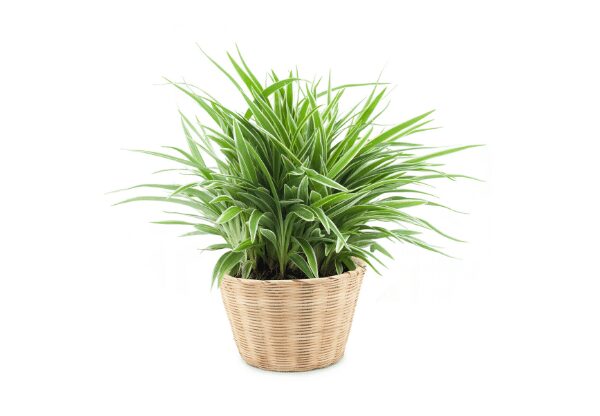Introduction
Spider plant or Chlorophytum comosum is an ornamental indoor plant native of Africa. This plant basically is a small herb that reaches up to 2 feet with tuberous rhizomes. Spider plant health benefits include indoor air purifying and medicinal properties (1).
Common names
- Airplane plant
- Hen and chicken
- Spider ivy
- Ribbon plant
Spider Plant health benefits
The roots of the Spider plants have great medicinal value. In Chinese tradition, the roots of spider plants are used for the treatment of bronchitis, burn, and bone fracture (2).
1.Healthy liver
The root extracts of spider plants are used to study the hepatoprotective activity in rats (3). The extracts of the spider plant root help in reducing the inflammatory process of the liver thus help in healing.
2. Potential prebiotic
Spider plant leaves helps in establishing the intestinal microorganisms thus acts as a potential prebiotic substance for a healthy bowel movement and healthy stomach (4).
3. Anti cancerous
The roots of spider plants have been studied against 4 different human cell lines mainly HeLa, HL-60, and U937 for different types of tumors. The root extracts, therefore, helps in suppressing the tumor activity by apoptosis or death of the cell. Although further elaborate experiments are yet to be done (1).
4. Effective against cough and cold
The whole plant extract of Spider plants helps in reducing the cough and thus relaxing the chest congestion. In Chinese tradition, the extract of the spider plant is used against bronchitis and cough-related problems (5).
5. Bone healing and burn
Chinese tradition uses spider plant extract for healing fractured bone and burns (5).
Spider plant indoor air purifying health benefits
Besides the medicinal properties of the Spider plant, it is also a beautiful indoor ornamental plant with air purifying quality. Spider plant absorbs indoor air pollutants like toluene, formaldehyde, ozone, and hydrocarbons.
1. Spider plant removes Formaldehyde
In an extensive study done by NASA (6), it was found that spider plants with a total leaf surface area of 2400 cm square able to absorb around 10300 micrograms of formaldehyde from a sealed chamber.
Formaldehyde is one of the common indoor air pollutants which is mainly released from paints, wooden polish, particleboards, plywoods, garage items, automobile oils, etc.
Formaldehyde is a colorless, strong-smelling chemical gas and has the potential of causing both long-term and short-term health hazards. Short-term health effects include burning of nose, eyes, throats, and skin irritation. Whereas long-term health side effects include cancer (7).
2. Spider plant absorbs Toluene
Another harmful indoor air pollutant that is absorbed by the spider plant is toluene. Gasoline, solvents in paints, plastic and soda bottles, paint cosmetics, and other organic chemicals are the major source of toluene. Toluene exposure is harmful to both children and adults. Long-term exposure to toluene causes central nervous system dysfunction and necrosis. Children exposed to these harmful pollutants also suffer developmental problems and reproductive problems in females. Short-term effects are Irritation of the upper respiratory tract and eyes (8).
3. Spider plant removes Ozone
Spider plant efficiently absorbs ozone from the indoor atmosphere. Studies were done on three indoor plants namely snake plant, spider plant and pothos plant showed that all are very efficient in absorbing ozone from the environment, therefore, they are capable of reducing air-born contamination (9).
Ozone (O3) is one of the most powerful oxidants found in our atmosphere. Indoor ozone concentration increases due to the use of a copy machine, laser printer, ultraviolet lightning, and air purification system.
Direct inhalation is the main reason for ozone toxicity in humans. Exposure to ozone also results in pulmonary edema, hemorrhage, inflammation, and extensive lesions on the lung tissue, trachea, and upper bronchi. Other sources of indoor ozone emission are softwoods, paints, cleaning products, etc (10).
4. Spider plant reduces Hydrocarbons
Hydrocarbons are volatile organic compounds emitted from various sources like fossil combustion and other activity.
Hydrocarbons are carcinogenic in nature. When inhaled in its gaseous form may cause permanent lung damage and other respiratory-related disorders. Spider plants can help in absorbing hydrocarbons thus provides a clean fresh indoor environment.
How to grow and maintain a Spider plant?
The spider plant is herbaceous in its nature. Growing and maintaining a spider plant is relatively easy. We can decorate our house by potting spider plants either hanging or in traditional potting. The spider plant is easy to maintain.
- Direct sunlight is preferable for the spider plant to grow, but it can also thrive successfully under indirect sunlight.
- Irrigate the plant daily during the summer season or alternatively during the winter season.
- Normal N, P, K liquid fertilizers are enough for the proper nourishment of the plant.
- Propagation is simply by dividing the roots with leaves into a new pot. The plant is basically tuberous in its nature so propagation by tubers is also possible.
- Soil for potting should be a mix of sand and peat with a proper aeration system and fast draining.

[…] 7. Spider plant […]